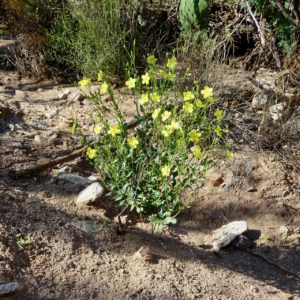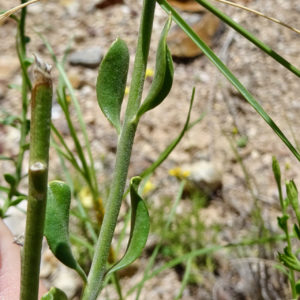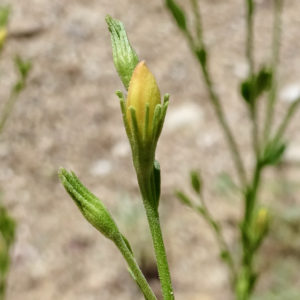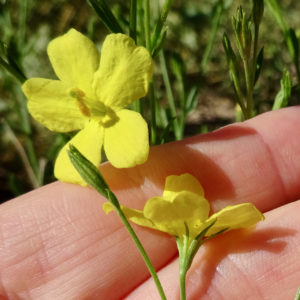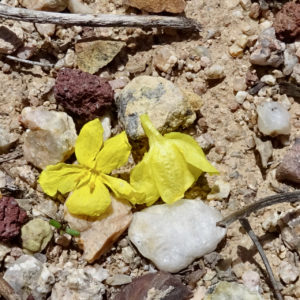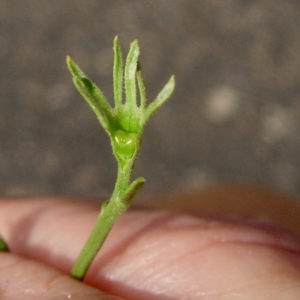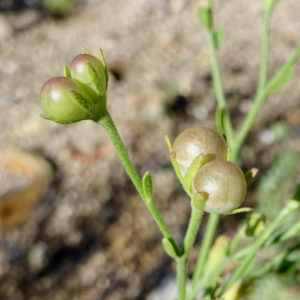Rough Menodora
Menodora scabra
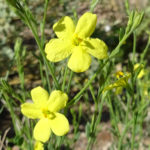
About the Plant
Rough menodora is multi-stemmed perennial, native to the desert southwest and Mexico, that is typically 1-1.5 feet tall. Its large, bright yellow flowers are showy, produced in spring (March-April) and again with the summer rains. Look for this plant in the morning since the flowers typically fall off by mid-day.
Rough menodora may be difficult to find at a nursery but can be grown from seed. It will survive on natural rainfall but will be larger, with more flowers, if irrigated several times a month during the summer. It prefers well-drained soil and full sun. It has a naturally upright form and needs little if any pruning except to remove dead stems. Grow rough menodora near trees, cactus, and rocks to soften sharp edges.
Notes:
- Rough menodora has medium-dark green, wiry stems that give rise to the common name "broom twinberry" (twinberry refers to the fruit - see discussion to right)
- Minute, rough hairs make the stems, leaves, and sepals slightly rough to the touch, hence rough menodora.
Wildlife value: provides good forage for wildlife and livestock
More Information
Weekly Plant on rough menodora
Technical botanical description from SEINet
In books:
Native Plants for Southwestern Landscapes by Judy Mielke, page 191
ID Characteristics
The stems of rough menodora are round and covered with short hairs that feel rough to the hand (click photo to enlarge). The leaves can range from 3/8 to more than an inch long, oval/oblong, widest in the middle or just beyond. The leaf edges have no teeth but may be rolled under - you can see this in the photo above. One unusual characteristic is the arrangement of the leaves - opposite low on the plant, alternate near the top of the plant.
The sepals of rough menodora are green, fused at the base, then divided into 7-13 narrow fingers about 3/16 inch long. The petals are also fused at the base (see photo of fallen flowers below) and may have a reddish tinge in bud.
The flowers of rough menodora typically have 5 petals, but 6-petaled flowers do occur. The petals flare out flat creating a flower about 3/4 inch across. Unusual in the plant world, rough menodora has flower parts in 2s - there are two stamen with golden anthers that extend above the plane of the petals and one pistil with a spherical stigma but an ovary that is divided into two parts (see below).
The flowers of rough menodora last less than a day, opening at first light and falling late morning. In the photo above you can see that the petals are initially fused at the base to form a short tube, then separate and flare out to form the showy part of the flower.
Once the petals fall, you can see the two-part ovary.
The two-part ovary matures into two spherical fruit held together side by side, the "twinberry" of the common name. The fruit is about 3/16 inch wide and thin-walled, breaking along a seam around the circumference, the top hemisphere comes off like a lid. The remaining fruit wall is translucent. The narrow fingers of the sepals remain around the fruit.
